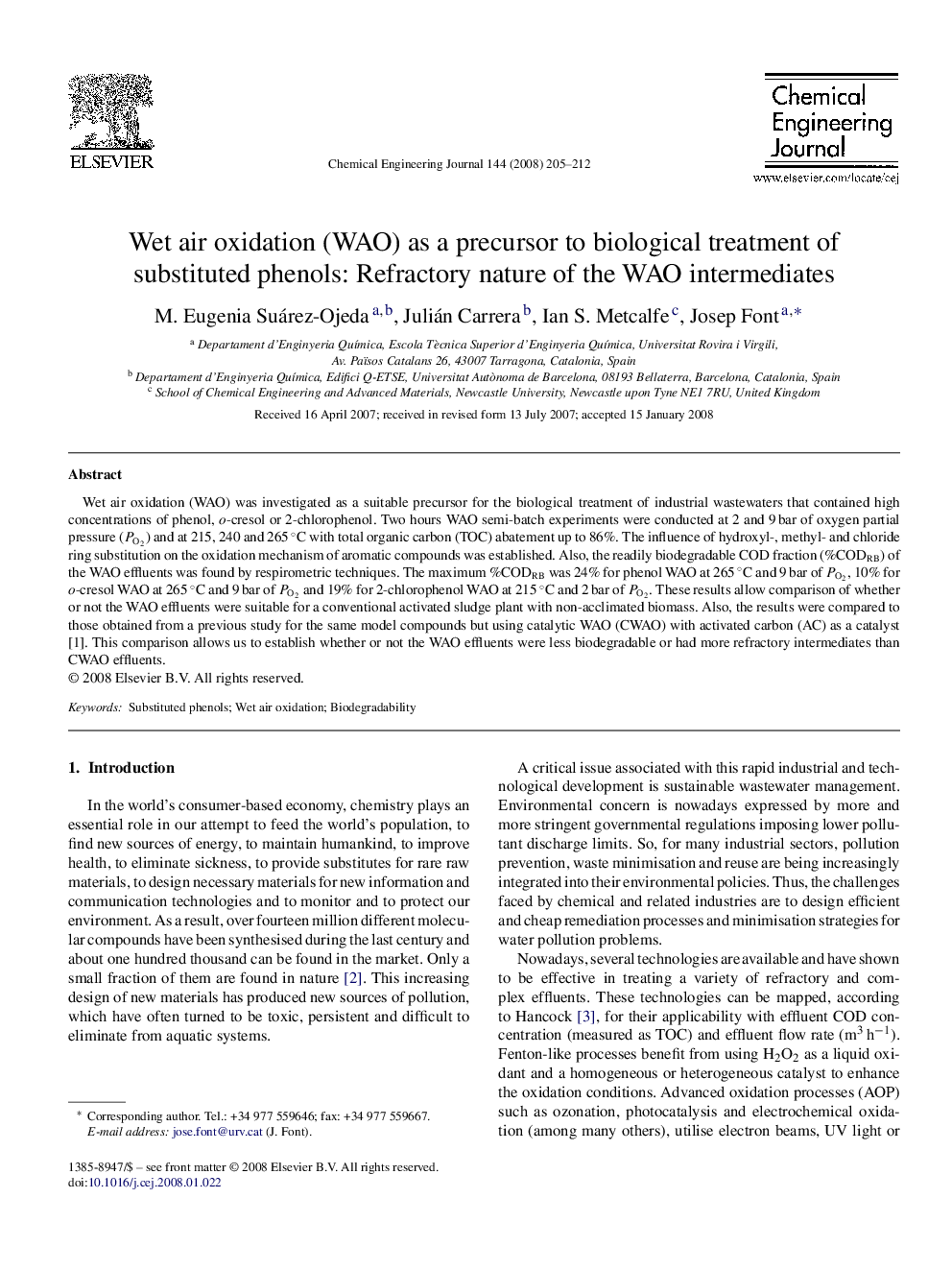| Article ID | Journal | Published Year | Pages | File Type |
|---|---|---|---|---|
| 152883 | Chemical Engineering Journal | 2008 | 8 Pages |
Wet air oxidation (WAO) was investigated as a suitable precursor for the biological treatment of industrial wastewaters that contained high concentrations of phenol, o-cresol or 2-chlorophenol. Two hours WAO semi-batch experiments were conducted at 2 and 9 bar of oxygen partial pressure (PO2PO2) and at 215, 240 and 265 °C with total organic carbon (TOC) abatement up to 86%. The influence of hydroxyl-, methyl- and chloride ring substitution on the oxidation mechanism of aromatic compounds was established. Also, the readily biodegradable COD fraction (%CODRB) of the WAO effluents was found by respirometric techniques. The maximum %CODRB was 24% for phenol WAO at 265 °C and 9 bar of PO2PO2, 10% for o-cresol WAO at 265 °C and 9 bar of PO2PO2 and 19% for 2-chlorophenol WAO at 215 °C and 2 bar of PO2PO2. These results allow comparison of whether or not the WAO effluents were suitable for a conventional activated sludge plant with non-acclimated biomass. Also, the results were compared to those obtained from a previous study for the same model compounds but using catalytic WAO (CWAO) with activated carbon (AC) as a catalyst [1]. This comparison allows us to establish whether or not the WAO effluents were less biodegradable or had more refractory intermediates than CWAO effluents.
